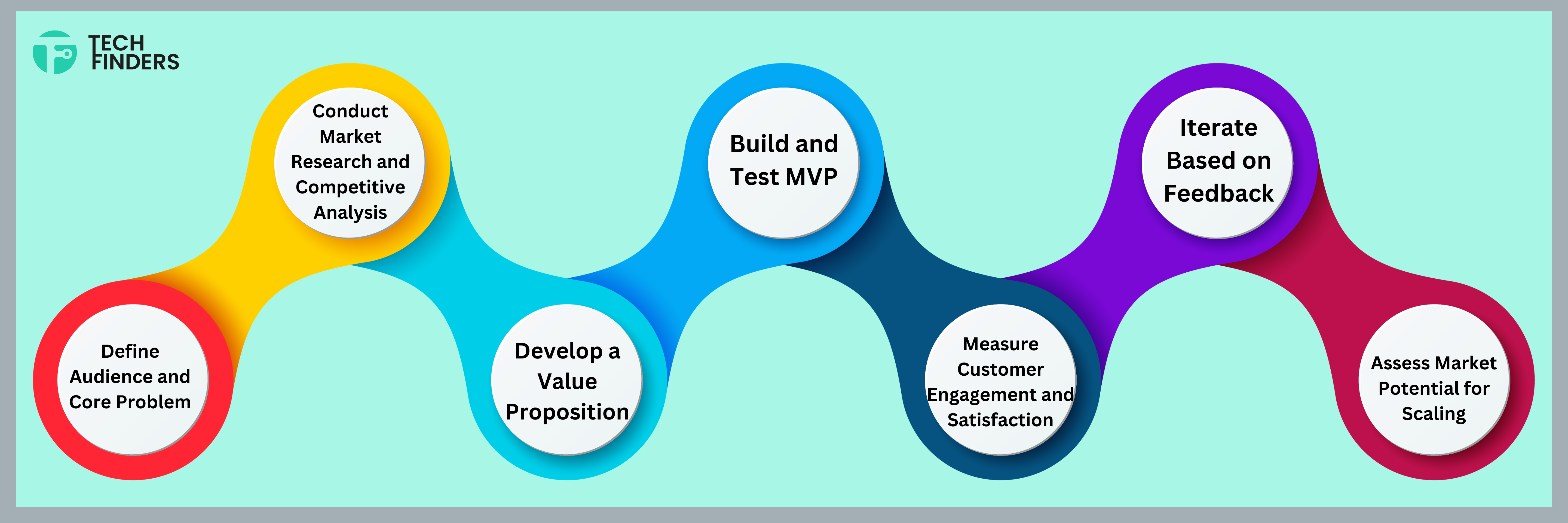7 tips to validate product market-fit
Product-Market Fit (PMF) is when your product finally clicks with the market. It’s the point where people don’t just see the value in what you’ve created—they actually want to use it regularly, and ideally, they’re willing to pay for it too. Hitting PMF is a big milestone because it shows that your product is solving a real problem for people. Without PMF, businesses struggle to grow, often losing customers and wasting resources trying to sell something that just doesn’t hit the mark. This article outlines several tips to validate Product-Market Fit.
When you have PMF, you’ll see a few clear signs:
- People stick around: Customers keep using your product because it meets their needs better than other options.
- Word-of-mouth growth: Happy customers spread the word, bringing in new users naturally.
- Low drop-off rate: Once people start using it, they’re likely to stick with it because it’s solving something important for them.
Here’s a straightforward guide of 7 tips to validate Product-Market Fit before committing fully to development.
1. Define Your Audience and Their Core Problem
To begin, narrow down your target customer and identify their main pain points. Build a profile based on demographics, behaviors, and needs, aiming to understand the actual challenges they face. Talking to potential customers at this stage can offer valuable insights that ground your assumptions in real-world needs rather than guesses.
2. Research the Market and Competition
After clarifying your audience, dig into the market to see what solutions already exist. Understanding competitors helps you identify gaps that your product can fill. Look at their strengths and weaknesses through customer reviews or feedback. Analyzing what’s missing in competitors’ offerings can reveal opportunities for your product to stand out.
Also, assess the market size and growth potential. Even if you find a unique solution, it’s crucial to ensure there’s enough demand to support your business.
3. Craft a Strong Value Proposition
With insights from your research, develop a clear value proposition that sets your product apart. It should articulate precisely how your product solves the customer’s problem in a way competitors don’t. At this stage, engage with prospective customers to ensure your message resonates, and make any necessary adjustments.
4. Create and Test an MVP
Building a Minimum Viable Product (MVP) allows you to test your assumptions without investing in full-scale development. Focus on core features that address the main customer problem. Testing the MVP with early adopters provides valuable feedback, revealing how customers interact with it and what they would improve or change. Positive feedback and willingness to pay are great indicators of PMF.
5. Measure Engagement and Satisfaction
Metrics like user retention, churn rate, and customer satisfaction are essential for assessing PMF. A high level of engagement and low churn suggest that users are deriving value from the product. Running an NPS (Net Promoter Score) survey can also show if customers are likely to recommend your product, which is a strong sign of PMF.
6. Iterate Based on Feedback
Feedback from early adopters is gold for refining your product. Use it to improve core features, enhance the user experience, and fix any issues. Each iteration should bring you closer to a version of your product that better satisfies customer needs. Continue gathering feedback and making changes until there’s consistent satisfaction and high engagement.
7. Evaluate Market Potential for Scaling
Once your product resonates well with users, assess if it’s ready to scale. This involves checking if the demand is sustainable and if the product can be expanded to new market segments without major changes. Testing additional marketing channels and evaluating partnerships can further inform your scalability strategy.

Conclusion
Validating product-market fit is about systematically proving that your product solves a real need in the market. By following these steps—defining your audience, researching, building an MVP, gathering feedback, and iterating—you can maximize the chances of creating a successful, market-ready product. This approach not only saves resources but also ensures that you’re building something that people truly want.
Do you need help building a product-market fit? Contact us so that we can help you build the best product you can have.

